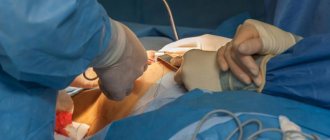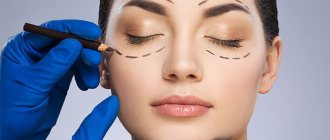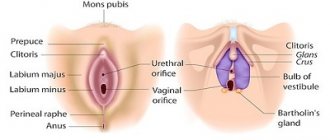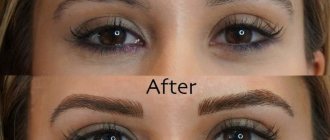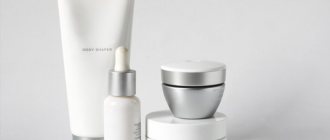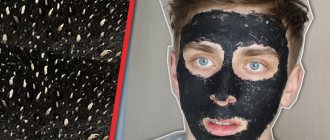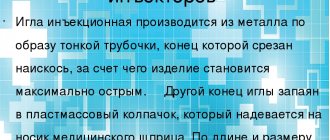Plastic surgery is a real fashion trend that is only gaining popularity from year to year. So, over the past few years, many surgeons have appeared in the beauty industry who promise not only to return your youthful face, but to turn it into a work of art - Rich Girl Face (in Russia there is a similar term - “mannequin face”). But how realistic is this and what surgical procedures are hidden behind the fashionable name “mannequin lift”? We are looking into this and other issues together with the famous plastic surgeon, Doctor of Medical Sciences, Igor Anatolyevich Bely.
Frontal-temporal lifting
A frontal-temporal lift is a forehead and eyebrow lift surgery aimed at correcting imperfections in the upper third of the face, regardless of whether they are hereditary or caused by aging.
The upper face lift surgery is performed through several small incisions (about 1 cm) located in the scalp, so no scars are visible after the temporal lift surgery.
As a result of a forehead lift, the patient gets rid of a tired or severe appearance and appears refreshed and rested, with a more open look.
What is a fashion model lift?
“Mannequin lift” promises a fairly easy fulfillment of a cherished dream - attractive eyes (almond-shaped cut, slightly raised outer corners) and magnificent brow extension. Rich Girl Face effect without the slightest signs of aging eyelids, drooping eyebrows or wrinkles around the eyes just 1-2 weeks after surgery. But how realistic is this?
Endoscopic forehead and eyebrow lift
Endoscopic frontal-temporal lifting allows you to perform minimal intervention, without resorting to a complete “opening”, but only what is necessary to install a mini-camera, which allows you to monitor on the monitor screen the progress of actions performed using special tools.
As a result, the plastic surgeon can minimize surgical trauma and reduce scarring. In aesthetic surgery, this technique is effective when it comes to problems of the forehead and temples.
The principle of endoscopic forehead and eyebrow lifting is to detach the entire area, weakening the muscles responsible for the formation of wrinkles. At the end of the operation, the surgeon repositions the tissues and secures them in proper position using deep clamps.
Endoscopic lifting can be done separately combined, if necessary, with additional aesthetic procedures on the face, such as blepharoplasty (aesthetic eyelid surgery), canthopexy (lifting the corners of the eyes), cervicofacial lifting, laser resurfacing, peeling, injections, etc...
This operation can be performed on both men and women starting from the age of 40. In some cases, it is carried out at an earlier age, when the deficiencies are pronounced (hereditary factor) and are not associated with age-related changes. For example, initially low eyebrows or some prematurely developed wrinkles due to muscle hyperactivity.
Endoscopic lifting
The main advantage of any endoscopic operation is the absence of incisions. During an endoscopic facelift, the soft tissues of the face are peeled off through small punctures and pulled back. In this case, the skin is not excised, but only moved. Oddly enough, such a lift is the most traumatic, since it requires extensive tissue detachment - from the eyebrow line (after all, we want to tighten them) and almost to the back of the head.
Pros: no incisions, correct direction of lifting, more possibilities for correcting asymmetry, arching, eyebrow shape, etc. Beautiful, predictable result.
Cons: long-term loss of sensitivity over the entire area of the detachment (more than half of the head goes numb for 6-10 months). Stress baldness is possible due to problems with hair nutrition that can arise as a result of such a large detachment. The tightened fabrics are secured with bolts and screws. Not all patients are ready to live with them for the rest of their lives.
Endoscopic surgery is longer and more traumatic, and therefore the rehabilitation after it is longer. But the effect is less stable. Tightened tissues can tear away from the “screws” and other fasteners holding them. If this happens, everything gradually slides back to its original position. Sometimes this happens after 6-12 months (of course, not always, not often, but this happens and cases are not isolated).
Frontal-temporal lift surgery. Video
On video: a fragment of the frontotemporal lifting operation. I focus on the stage of skin incision. The fact is that this is a very important moment of the operation, since it is necessary to make the incision in such a way as not to damage the hair follicles. Therefore, the cut in this case is not a perfectly straight line. If the incision is made as accurately as possible, then the scar is then practically invisible.
Type of anesthesia and hospitalization for temporal lobe lift
Depending on the case, two types of anesthesia can be used:
- Local anesthesia with sedation.
- General classical anesthesia, during which the patient is completely immersed in sleep.
The operation can be performed “outpatient”, in which case the patient can leave the clinic on the day of the operation after several hours of postoperative observation.
However, in some cases, a short hospital stay is preferable. The patient arrives in the morning (or sometimes the day before, in the afternoon), and the patient is allowed to be discharged on the next postoperative day.
Cost in Moscow
Are you interested in temporal lifting in Moscow? Don't look for cheap places. An organic combination of high quality and affordable price - in the clinic of Vladimir Kosinets. Thousands of satisfied customers and as many positive reviews. You will also enjoy the most comfortable conditions of your stay. You can also evaluate the surgeon’s qualifications by looking at the photos before and after the operation.
Call to schedule an initial consultation to find out the exact price of frontotemporal lifting in your case and to agree on the date of the operation.
| Facial rejuvenation | Price |
| SMAS lifting with lipofilling and liposuction of the face and neck | 280 000 |
| Temporal face lift | 120 000 |
| Mid-face lift | 160 000 |
| Lipofilling (1 zone, taking into account the fat sampling procedure) | 15 000 |
| Mentoplasty (chin prosthetics using lipofilling) | 50 000 |
| Bulhorn (upper lip surgery) | 60 000 |
| Upper blepharoplasty + lower blepharoplasty + upper face lift | 180 000 |
| Upper blepharoplasty + lower blepharoplasty + upper face lift + bullhorn | 210 000 |
| Upper blepharoplasty + temple lift | 150 000 |
Progress of the frontal-temporal lifting operation
Each surgeon has his own method of working, which he adapts to each individual case in order to achieve the best results. However, I will explain the general basic principles.
Skin incisions measuring 5-10 mm (their number is from 3 to 5 pieces) will be located in the hairline, a few centimeters from the edge of the hair growth of the forehead. One of the incisions will allow the passage of an endoscope connected to a mini video camera, while the others will open the way for various instruments specially adapted to endoscopic surgery.
The location of these incisions corresponds, of course, to the location of future scars after a temporal lift, which will be practically invisible, due to the fact that they are small in size and will be hidden in the hair.
- The entire forehead and temples are subject to exfoliation down to the brow ridges and the root of the nose. Sometimes, this peeling can be carried out to the level of the cheekbones and upper cheeks.
- The muscles are weakened in order to get rid of the wrinkles that they cause: the frontal muscle for horizontal wrinkles, the interglabellar muscles for interglabellar wrinkles. In addition, depending on the specifics of each specific case, other operations of a special nature may be performed.
- The detached tissue will be subjected to a tensioning procedure to smooth out crow's feet, lift the brows and remove loss of forehead tone. It will be maintained in proper position using deep fixation techniques, the type of which will depend on the surgeon's preferred technique.
- Small incisions are most often closed using staples, which can be easily removed.
The duration of the operation is from 45 to 90 minutes, depending on the volume of intervention.
Midface lift: indications and contraindications
Temporal lifting is prescribed in the following cases:
- drooping corners of the mouth,
- pronounced nasolabial folds,
- dermochalasis of the eyelids,
- wrinkles near the mouth, eyes,
- ptosis of eyelid tissues,
- bags under the eyes,
- loose skin,
- drooping cheeks, loss of volume,
- pronounced tear troughs,
- zygomatic sac.
Temporal eyebrow lifting tightens overhanging tissue under the eyebrows, makes the look clear, removes ptosis of the upper eyelids, and lifts the tails of the eyebrows. There are not many contraindications to this procedure and they are mainly typical for most operations under general anesthesia:
- pregnancy and breastfeeding period,
- oncology,
- blood diseases,
- diabetes,
- hepatitis,
- mental illness,
- HIV,
- increased sensitivity to anesthesia.
Rehabilitation after a forehead lift
After frontotemporal lifting, there is usually no pain, but sometimes there is some discomfort associated with a feeling of tension in the forehead, temples and eyelids.
Traces of the intervention progressively disappear, allowing the patient to return to normal socio-professional life after some time (5 - 20 days, taking into account postoperative signs).
In the first days, complete rest is necessary and you should refrain from excessive exertion. The consequences of the operation are mainly expressed in the appearance of edema (swelling) and ecchymosis (bruising), the significance and duration of which varies greatly depending on the individual characteristics of the patient.
The bandage is removed between the 1st and 3rd days. The staples are removed between the 5th and 15th day.
During the first weeks, there may be some loss of sensation in the forehead, and in some cases itching in the scalp. These sensations will gradually disappear.
Postoperative period
After the operation, the patient remains in the clinic until the morning. In the morning we perform the dressing, and you can go home with a bandage on your head. There is no point in staying in the clinic for more than one day. One day after arriving home, that is, two days after the operation, you remove the bandage and take a shower and wash your hair.
After an endoscopic forehead lift, soft tissue swelling occurs in the surgical area. Although we make significant efforts to prevent it, this swelling can be significant. It increases until the third day, and then quickly passes; 7-8 days after the operation the patient looks quite decent.
| EVENT | HOW LONG AFTER THE OPERATION CAN THIS BE DONE? |
| To wash hair | 2-3 days |
| To drive a car | 7 days |
| Going to work | 2-3 weeks |
| Removing stitches | 2 weeks |
| Sex life | 2 weeks |
| Sunbathe in the sun or in a solarium | 2 -3 weeks until bruises disappear |
| Fitness with a gentle load | 2 weeks |
| Pool | 3 weeks |
| Mandatory follow-up visit to the doctor | 2 months |
A visit to a cosmetologist after surgical facial rejuvenation is welcome, but here there are certain restrictions. Before you begin the procedure, inform your cosmetologist that you have had surgery.
| EVENT | HOW LONG AFTER THE OPERATION CAN THIS BE DONE? |
| Lymphatic drainage facial massage | 1 Week |
| Microcurrents | 1 Week |
| Gentle cosmetic care, without mechanical cleaning | 10 days |
| Botox or Dysport injections | 3 weeks |
| Peeling | 1 month |
| Face massage | 1 month |
| Laser resurfacing | 1 month |
| Injections of hyaluronic acid preparations | 6 months |
Facial anatomy
In order to visualize and clearly understand what age-related changes can be eliminated with the help of a facelift, and what visible successes can be achieved, it would be good to know how our face is anatomically structured. What and for what reason happens to him over the years.
Facial tissues are represented by layers of skin, muscles and subcutaneous fat. All this covers the bones of the facial skeleton like a stretched rubber band. But everything in the world is subject to destruction and decline, our appearance is no exception. In the process of aging, once fresh, full of vital energy tissue weakens and stretches, the skin loses natural collagen, and with it elasticity, a wonderful ability to maintain young, dense contours.
There are completely objective reasons for the aging of facial tissues:
- Skin ages mainly due to sun exposure. Nothing has such a detrimental effect on the skin as the sun's rays - they destroy the network of collagen and elastin. By losing these important components, the skin loses its strength and flexibility, changes its structure and takes on a weakened, flabby appearance.
- The facial muscles, in turn, suffer the most from facial movements. Facial expressions, especially pronounced ones, stretch and weaken them.
- Time itself has the strongest effect on subcutaneous fat. The fat layer, which once gave our face soft, smooth outlines, is depleted and sinks down, pulling the skin along with it.
All these changes naturally occur in parallel. Due to this, the eyelids and cheeks droop, areas of depression appear under the eyes and in the area of the upper jaw, and deep wrinkles form in the middle zone of the face.
Types of frontlifting
In fact, initially the patient and the doctor choose from two methods of forehead and eyebrow lifting - open and endoscopic. And the specific technique is determined based on the patient’s physical characteristics and the assigned tasks.
Today, several aesthetic techniques are actively used:
- coronary lifting of the forehead and eyebrows;
- endoscopic forehead and eyebrow lift;
- temporal brow lift;
- eyebrow lifting with an incision under the eyebrow;
- transpalpebral fixation of eyebrows;
- transpalpebral excision of the muscles of the bridge of the nose (with access through the upper eyelid);
- forehead lift using endotins;
- ligature forehead lift using threads.
Coronal forehead lift
For a long time it was considered the most effective method for correcting the forehead and eyebrows, ideal for equalizing facial proportions. However, with the introduction of more gentle techniques into practice, this type of plastic surgery began to be used only when using minimally invasive methods was problematic.
There are three types of coronary lift based on the nature of the surgical approach.
A coronal (or standard) zigzag incision is made well behind the hairline from one ear to the other. During the operation, the surgeon redistributes the skin and deep layer of tissue and excises excess. The scar after the operation remains in the scalp, which allows it to be completely invisible, but this causes the hairline to shift back, which automatically makes the coronal method unsuitable for patients with a high forehead and receding hairline.
The modified incision starts at the temple, curves at the frontal area, follows the hairline and ends at the other temple. This incision, if necessary, allows you to reduce the height of the forehead by lowering the hairline.
An incision along the marginal hairline is suitable for patients with a high forehead and men with receding hairlines on the forehead and temples, since the height of the forehead remains unchanged. With this method, a strip of skin 1-2 cm wide is cut, then sutures or staples are applied, which are removed 10-12 days after the manipulation.
Coronary front lift is performed under general anesthesia, the operation lasts 1-2 hours, depending on the complexity.
The advantages of a coronary forehead and eyebrow lift: noticeable long-term rejuvenation, improvement of facial geometry, scars invisible to others.
Disadvantages of the method: displacement of the marginal hairline, high tissue trauma, high risk of complications, long-term rehabilitation, possible temporary loss of sensitivity in the operated area.
Endoscopic forehead and eyebrow lift
Suitable for almost everyone (especially balding men), with the exception of patients with deep wrinkles on the forehead or severe drooping of the eyebrows.
During the intervention, the plastic surgeon makes several small incisions in the scalp, into which he inserts endoscopic instruments and uses them to manipulate the muscles responsible for the formation of wrinkles on the forehead and support of the eyebrows.
Endoscopic forehead and eyebrow lifting is performed under general anesthesia; the procedure takes up to 2 hours, depending on the complexity of the task.
The main advantages of the endoscopic method include low invasiveness, low risk of complications, quick results, and short rehabilitation times.
Disadvantage of the method: the operation is not suitable for patients with particularly pronounced sagging skin - in such cases it is impossible to do without surgical excision of excess tissue.
1 Forehead and eyebrow lift
2 Forehead and eyebrow lift
3 Forehead and eyebrow lift
Forehead lift using endotins
This is another very effective endoscopic method, which also has virtually no contraindications.
The surgical approach used is the same as in the endoscopic forehead lift - mini-incisions. Through them, the surgeon injects endotins under the skin - thin self-absorbing plates with tiny teeth, which are used to attach them to the deep layers of the skin. Within six months, endotins are completely absorbed, and in their place collagen fibers grow, which provide a long-term lifting effect.
The operation is performed within 30-60 minutes using local anesthesia.
The main advantages of the method: precise placement of the plates and their reliable attachment, low risk of complications, excellent absorbability of the material, short recovery period (10-12 days).
Disadvantages: the technique is not suitable for patients with thin skin, under which the outlines of the plates may appear.
Temporal brow lift
A relatively minimally invasive and effective rejuvenating technique. During this operation, an aesthetic surgeon excises excess skin on the temples, which makes it possible to lift the eyebrows and remove wrinkles in this area.
This type of browlift lasts about 45 minutes, general or combined anesthesia is used.
The advantages of the technique: low trauma, short recovery period, the ability to combine eyebrow correction with other plastic surgeries.
You can evaluate the results of the procedure by comparing the photo before the brow lift and the photo after the brow lift.
1 Before brow lift
2 Recovery period after surgery
3 10-12 days after surgery
Transpalpebral eyebrow lifting
This technique involves working with the tissues of the upper eyelid, after which wrinkles and folds disappear in the area of the glabella and forehead. Technique: the surgeon cuts the eyelid in the thickness of the natural fold, tightens the skin, shortens some of the muscles and removes excess fatty tissue.
The intervention lasts no longer than 1 hour, general anesthesia is used.
Advantages of the method: almost instant rejuvenation effect, low risk of complications.
Brow lift with an incision above the eyebrow
Currently, the method is rarely used due to the fact that after the intervention a noticeable scar remains in the affected area. This type of browlifting can be recommended for elderly patients with significant tissue ptosis and numerous deep wrinkles.
The treatment takes about 30 minutes and is performed under local anesthesia.
Thread (ligature) forehead lift
The method involves the introduction of special threads into the eyebrow area, tightening and supporting the forehead tissue from the inside. The biomaterial can be absorbable or non-absorbable (requiring removal).
The operation takes about 30 minutes and is performed under general or local anesthesia. On our website you can read more about forehead thread lift.
Incisions in the scalp
Today, lifting the midface, eyes and eyelids can be performed using a variety of surgical techniques. Often, surgeons use access through the lower eyelids in mid-zone plastic surgery.
However, endoscopic technology occupies a leading place among other methods - it is the most convenient, modern and least traumatic for the patient. In addition, when used, there are practically no traces of surgical intervention.
During an endoscopy, the doctor makes tiny incisions in the part of the head that is covered by hair. An endoscope, a thin metal tube with a camera at the end, is inserted through the incisions under the tissue.
The image is displayed on the computer monitor. Thanks to this, this technique allows surgeons to see what is happening from the inside.
The surgeon’s goal is to move the facial tissues and fat layer higher, to lift them, as they are relaxed and stretched over time. To do this, the doctor uses very thin, blunt instruments to lift and peel away the tissue under the skin. As a result of these manipulations, a thin tunnel is created in the middle zone of the face, which allows you to tighten the sagging tissue from the inside.
Preparation and rehabilitation
Preparation for a midface lift includes:
- consultation with a surgeon,
- general and biochemical blood test,
- Analysis of urine,
- consultation with an anesthesiologist (before the procedure).
A week before the procedure, it is advisable to stop taking hormonal and blood-thinning medications, and alcohol. It is advisable not to visit the sauna and bathhouse. Eating should be stopped 6 hours before surgery. Rehabilitation lasts about a month. The very next day the patient is discharged, prescribed painkillers and the date of the next dressing change. You can wash your hair after 5 days.
For this period, you should forget about the sauna, steam bath, solarium and prolonged exposure to the sun. Physical activity, especially bending and heavy lifting, is also prohibited. The usual caring cosmetics for the face should be put on the far shelf. The doctor will recommend the patient special restorative agents, which are indicated in such cases. Physiotherapy is recommended to speed up recovery.
Popular questions
When can you sunbathe after lifting?
You can sunbathe after lifting only after three weeks. This also applies to solariums. UV rays act aggressively on the skin, slowing down regeneration processes. Be sure to use sunscreen.
How is this better than blepharoplasty?
The main difference between this service and blepharoplasty is the ability to eliminate such an unpleasant consequence as “round eyes” after lower eyelid blepharoplasty. Lifting works much more accurately and carefully. It can also completely replace upper blepharoplasty if not all soft tissues need to be corrected, but only the outer parts. They are the ones who make the look heavy over time.
Specifics of the recovery period
The duration of rehabilitation, the rate of subsidence of swelling and hematomas depend on the technique used, the volume and complexity of the correction. On average, soft tissue recovery takes 2 weeks. Loss of sensitivity may persist for up to 3 weeks, but it goes away on its own without additional treatment.
If the surgical approach was carried out using incisions and subsequent suturing of the wound, the sutures are usually removed after 10 days. Limitations after surgical brow lift (within 1 month) are:
- intense sports, increased physical activity;
- insolation;
- alcohol, smoking;
- thermal procedures and mechanical effects on the operated area.
Sometimes a special elastic tape is applied to the correction area (for up to 3 weeks) to fix the displaced tissues and secured in a new position. Individually, according to indications, medicinal antibacterial therapy and painkillers may be prescribed to prevent inflammatory lesions and relieve pain.
Forehead correction with endotins
Endoscopic forehead lift surgery can be performed using endotins. These are thin, absorbable strips equipped with sharp teeth to secure tissue (see detailed information on the use of endotins in facial plastic surgery).
Endotins make it possible to solve the problem of reliable and uniform tissue fixation without overload and the risk of tearing inherent in point fixation. Otherwise, the operation is the same as a regular endoscopic forehead lift.


